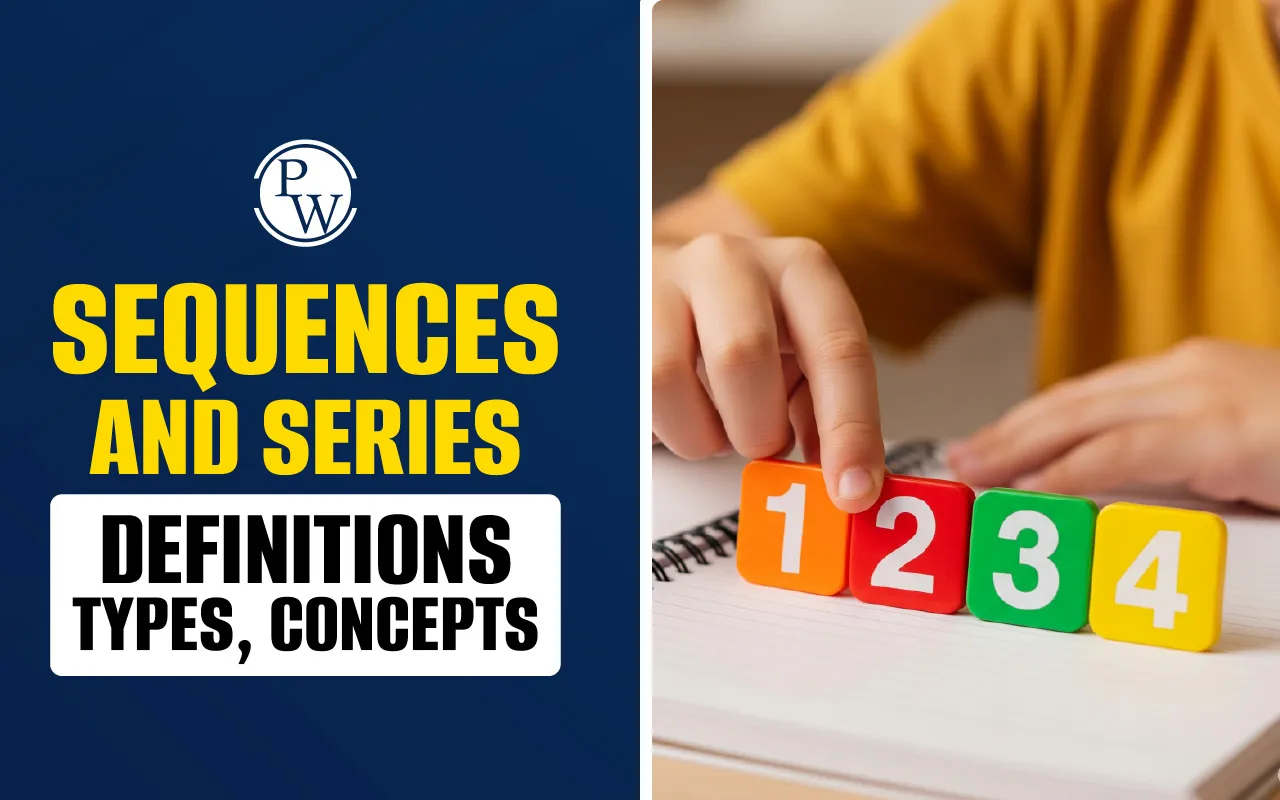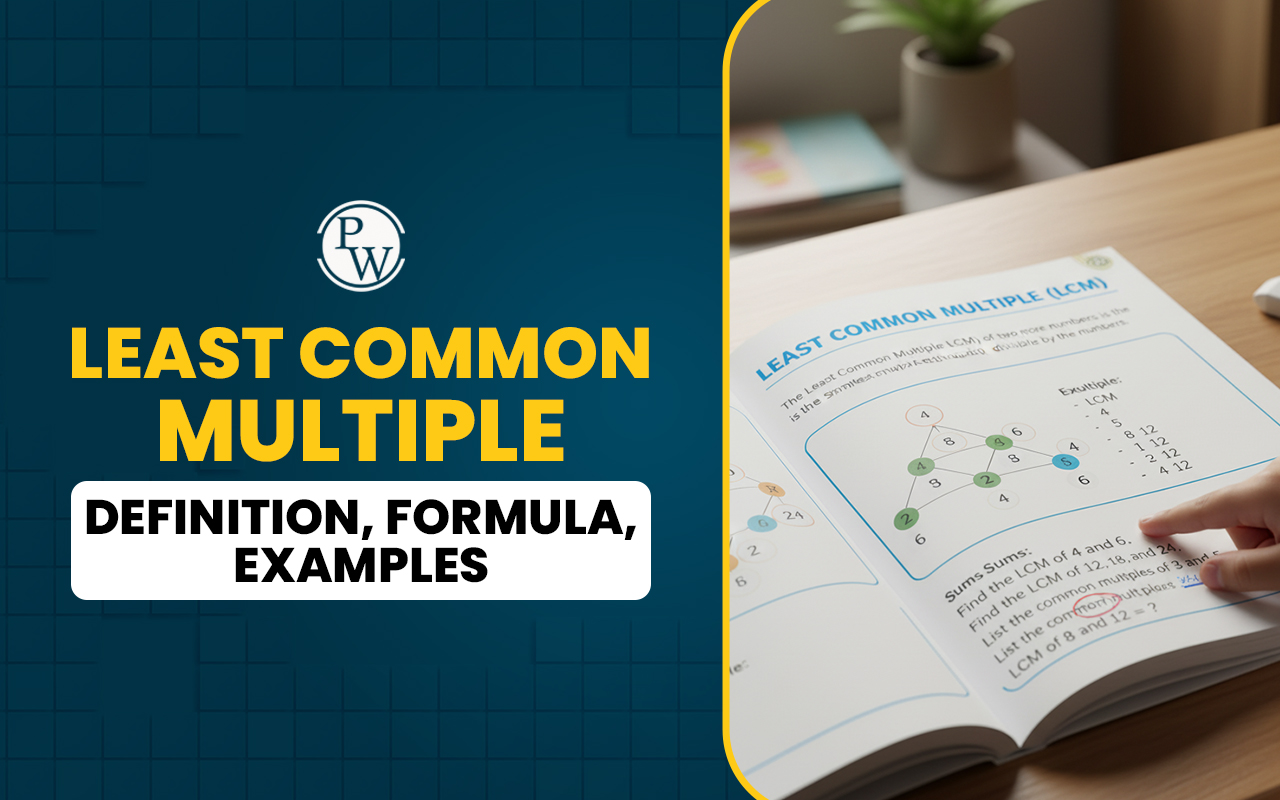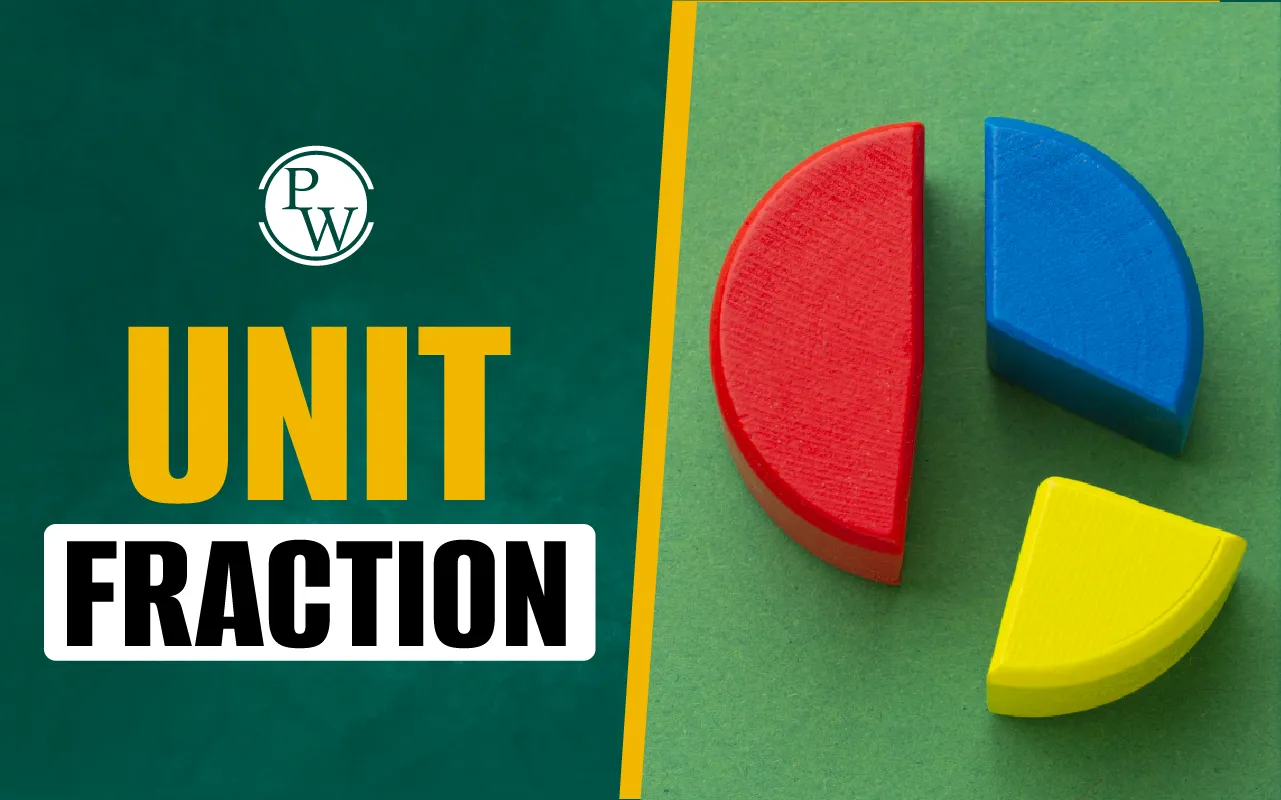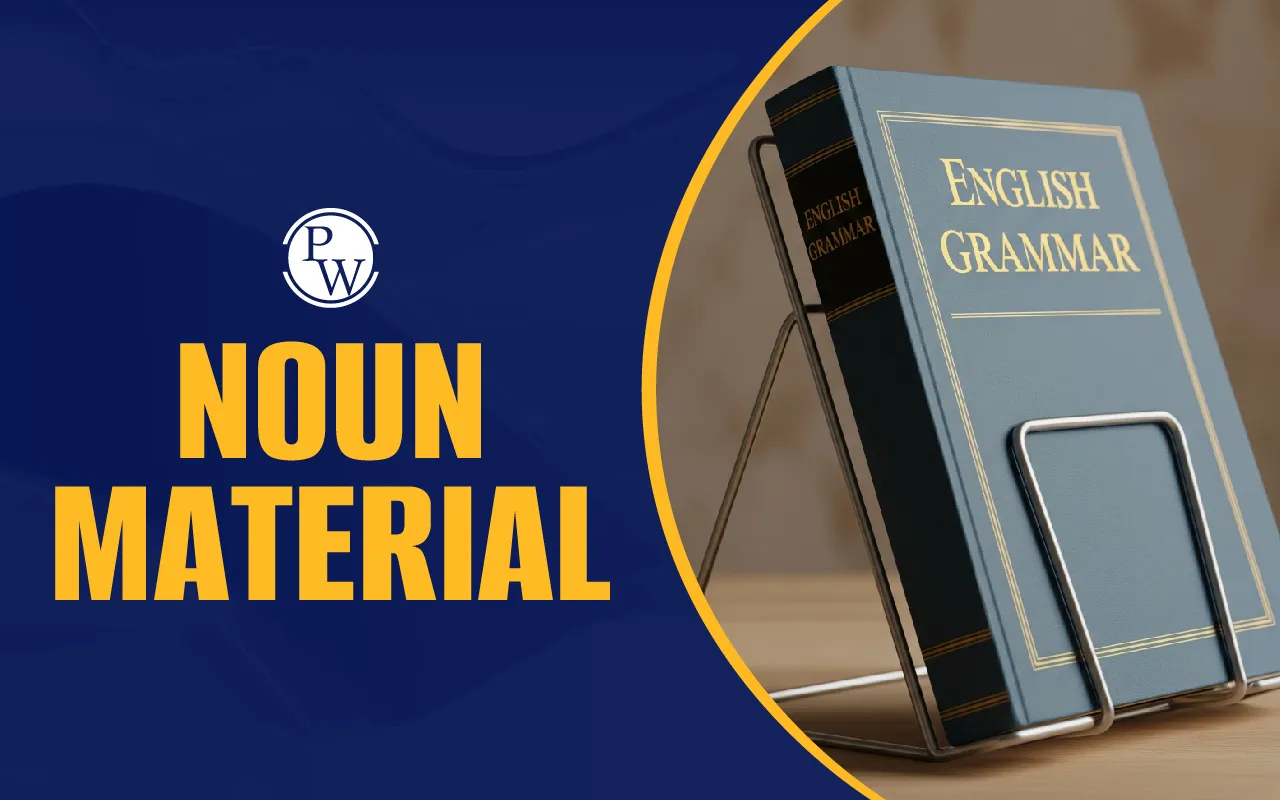
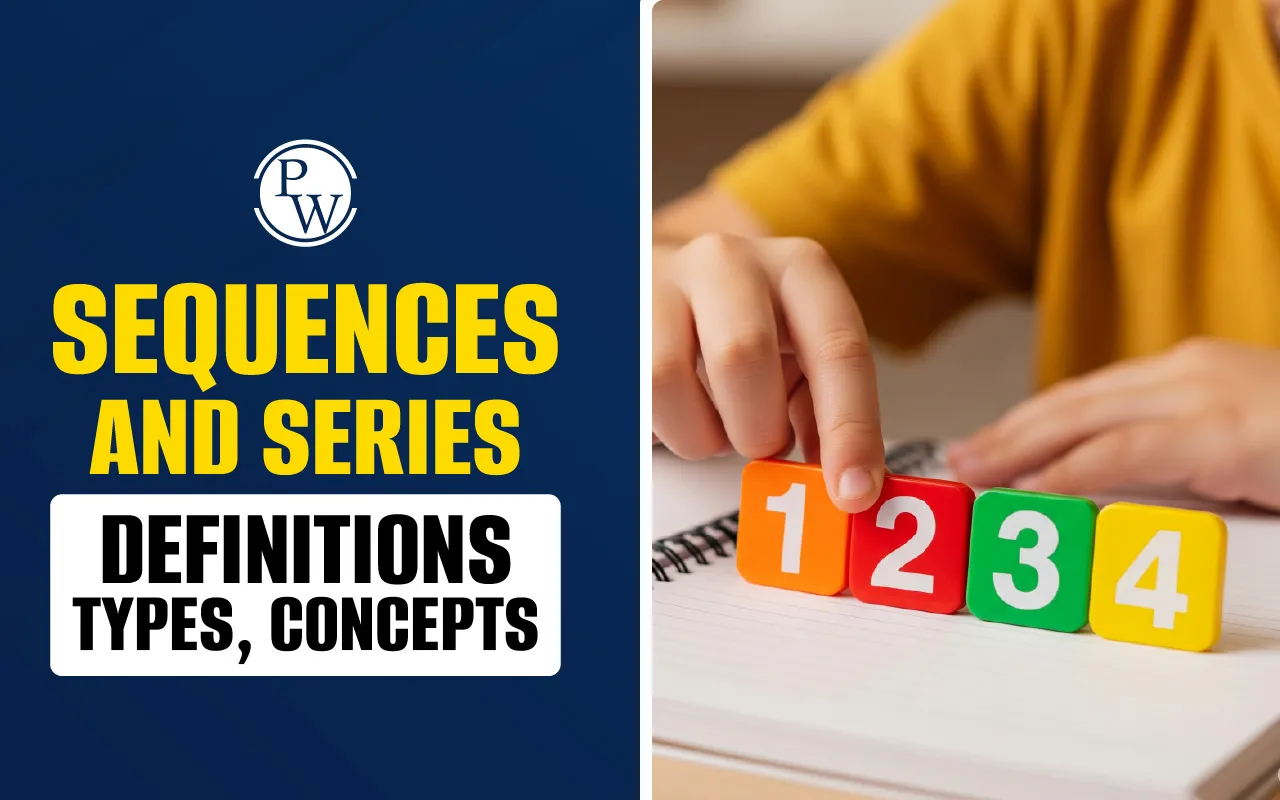
Sequences and Series are important topics in Math that help us understand number patterns. In a sequence, numbers are arranged in a specific order. Each number is called a term, and it follows a rule. When we add all these numbers together, we make a series. Learning Maths Sequence and Series is easy if you know the basic concepts and formulas.
Many students find it confusing to know the difference between series and sequence, but once you understand the basics step by step, it becomes easy to understand. So, continue reading to learn what Sequences and Series are, their definitions, along with examples and important sequence and series formulas.
Read More: Perfect Squares
Sequence and Series Definition
In Math, a sequence can be defined as a list of numbers arranged in a fixed order. These numbers follow a rule or pattern. Each number in the list is called a term. For example, if the first number is 1, then the next ones will be 2, 3, and so on. The position of each number is also important in a sequence.
On the other hand, a series is the total we get when we add all the terms of a sequence. It is made by joining the numbers with a plus sign. For example, if we have a sequence like a1, a2, a3, ..., then the series becomes a1 + a2 + a3 + and so on.
Maths Sequence and Series are important arithmetic concepts used in solving many questions, especially in algebra and calculus. To understand them better, let's learn the difference between sequence and series.
Difference Between Series and Sequence
Sequences and Series are related but not the same. While learning about these, one common question that comes to mind is, "What's the difference between series and sequence?" So, let’s understand the basic difference between series and sequence here:
What is a Sequence?
-
A sequence is a list of numbers arranged in a specific order.
-
The numbers in a sequence always follow a fixed pattern.
-
Each number in the list is called a term.
-
The position of each term is also important in a sequence.
-
A sequence can either have a limited or unlimited number of terms.
-
Examples of sequences include arithmetic sequences, geometric sequences, and others.
-
What's most important in sequence is how the numbers are arranged, not their sum.
What is a Series?
-
A series is the total you get after adding all the terms given in a sequence.
-
It gives the cumulative sum of the terms present in a sequence.
-
Like a sequence, a series can also be finite or infinite.
-
Some common examples of a series are arithmetic series, geometric series, and more.
-
In a series, the sum is the main focus, not the arrangement.
-
Series are generally used when we need to find total values in questions.
Now that you’ve understood the difference between series and sequence, let’s understand the types of sequences and Series in Math.
Read More: Divisibility Rule of 11 with Examples
Types of Sequences and Series
In math, there are different types of sequences and series. Each type has its own rule or pattern. Keep reading to know the different types of maths sequence and series.
Common Types of Sequences
-
Arithmetic Sequence: An arithmetic sequence is a list of numbers where the same number is added every time to get the next term. This number is called the common difference. For example, if we start with 2 and keep adding 3, we get 2, 5, 8, 11, and so on. Here, 3 is the common difference.
-
Geometric Sequence: In a geometric sequence, each term is made by multiplying the previous term by the same number. This is called the common ratio. For example, 2, 6, 18, 54... In this, each term is 3 times the one before it.
-
Harmonic Sequence: A harmonic sequence is a little different from the above two. If you take the reciprocals (1 divided by each term) of the numbers, they make an arithmetic sequence. For example, 1, 1/2, 1/3, 1/4, and so on. The focus here is on the pattern in the reciprocals.
-
Fibonacci Sequence: The Fibonacci sequence starts with 0 and 1. After that, each term is the sum of the two terms before it. So, it looks like 0, 1, 1, 2, 3, 5, 8, 13, and so on. This is a special sequence seen in nature, too.
Common Types of Series
-
Arithmetic Series: When we add the terms of an arithmetic sequence, we get an arithmetic series. For example, adding the first few terms of the sequence 2, 5, 8, 11... gives us a series like 2 + 5 + 8 + 11 + ...
-
Geometric Series: A geometric series is made by adding the terms of a geometric sequence. For example, the sum of 2 + 6 + 18 + 54 + ... is a geometric series.
-
Infinite Series: An infinite series does not have an ending. It has no final term.
Even though it has endless terms, in some cases, we can still find its total using a formula. -
Convergent and Divergent Series: Some infinite series add up to a value that does not go beyond a certain point. These are called convergent series. But if the total keeps on increasing without any end, it is called a divergent series.
Read More: Prove that Root 2 is Rational or Irrational
Sequence and Series All Formulas
To solve questions in maths related to these concepts, we use different Series and sequence formulas. These formulas help us find any term of a sequence or the total sum of a series. Check out the list of important sequence and series all formulas for arithmetic, geometric, and harmonic types.
1. n-th Term of an Arithmetic Sequence: To find the n-th term (any term in the list) of an arithmetic sequence, we use the formula aₙ = a₁ + (n – 1)d. Here,
-
aₙ = n-th term
-
a₁ = first term
-
d = common difference
-
n = position of the term
2. Sum of Arithmetic Series: To find the sum of the first n terms of an arithmetic sequence, we use the formula Sₙ = 2n(a₁ + aₙ). We use this formula to get the total of all terms from the first term to the n-th term.
3. n-th Term of a Geometric Sequence: To find the n-th term in a geometric sequence, we can use the formula: aₙ = a × rⁿ⁻¹. Where,
-
a = first term
-
r = common ratio
-
n = term number
4. Sum of a Geometric Series (Finite): To find the sum of the first n terms of a geometric sequence, we can use the formula: Sₙ = a(1 – rⁿ) / (1 – r). This formula applies when the number of terms is fixed.
5. Sum of a Geometric Series (Infinite): To find the total of an infinite geometric series, we use the formula: S∞ = a / (1 – r). This only works when r is less than 1.
6. Harmonic Series: For a harmonic sequence, the formula to find the sum of the first n terms is: Hₙ = 1 + 1/2 + 1/3 + ... + 1/n. This can also be written as: Hₙ = ∑ (1/k), from k = 1 to n.
Sequence and Series Examples
After learning about Maths sequence and series, their types, and key differences, let’s now look at some solved examples. These examples will show how to use different series and sequence formulas while solving questions in school or during exams.
Find the sequence and series examples with step-by-step solutions here to understand the concepts more clearly:
Example 1: The sequence is 6, 10, 14, 18, 22, …
Find:
a) The common difference
b) The general (n-th) term
c) The 12th term
Solution:
a) Common difference (d) = 10 – 6 = 4
b) n-th term formula: Tₙ = a + (n – 1) × d = 6 + (n – 1) × 4 = 4n + 2
c) 12th term: T₁₂ = 6 + (12 – 1) × 4 = 6 + 44 = 50
Example 2: The sequence is 2, 6, 18, 54, …
Find:
a) The common ratio
b) The 7th term
Solution:
a) Common ratio (r) = 6 ÷ 2 = 3
b) n-th term formula: Tₙ = a × rⁿ⁻¹ = 2 × 3⁶ = 2 × 729 = 1458
So, the 7th term is 1458.
Example 3: Find the sum of the first 8 terms of the sequence: 3, 7, 11, 15, …
Solution:
This is an arithmetic sequence with
-
First term (a) = 3
-
Common difference (d) = 7 – 3 = 4
-
Number of terms (n) = 8
So, we can use the formula: Sₙ = n/2 × [2a + (n – 1)d]
S₈ = 8/2 × [2×3 + (8 – 1)×4] = 4 × [6 + 28] = 4 × 34 = 136
So, the sum is 136.
Example 4: What is the sum of the infinite series: 10, 5, 2.5, 1.25, …?
Solution: Here,
-
First term (a) = 10
-
Common ratio (r) = 5 ÷ 10 = 0.5 (which is less than 1, so it’s infinite and converges)
We can use the formula: S∞ = a / (1 – r) = 10 / (1 – 0.5) = 10 / 0.5 = 20.
So, the sum is 20.
Example 5: Find the sum of the first 4 terms of the harmonic sequence: 1, 1/2, 1/3, 1/4
Solution: We can add the terms directly like this: S₄ = 1 + 1/2 + 1/3 + 1/4
≈ 1 + 0.5 + 0.333 + 0.25 = 2.083 (approx.)
So, the sum is around 2.083.
Also Read: Square Root
Make Learning Math Easier for Your Child With CuriousJr Tuition Classes
Is your child finding it hard to understand the math lessons they are learning at school? Sometimes, classes move too fast at school, and not every child can catch up at the same speed. As a result, homework becomes a daily struggle. You feel tired helping them every day, and your child feels frustrated when they can’t keep up.
With time, learning starts to feel stressful for both of you. If this sounds like what’s happening at your home, maybe your child just needs the right kind of extra support. CuriousJr’s Online Tuition Classes are specially designed for kids from classes 3 to 8. The lessons explained in these tuition classes are easy to understand.
-
Moreover, these school tuition classes are made to help your child understand all subjects better, from the basics to the more difficult topics.
-
The goal is not just to complete the syllabus but to make sure your child actually understands what they are learning.
-
In each live session, there are two teachers. One teacher explains the topic step by step, and the other teacher gives extra support during and after the class.
-
This way, if your child has any doubts, they can be cleared right at the moment without waiting.
-
Your child also gets regular support with their school homework. They are given practice questions and worksheets based on what they’re learning in class.
-
As parents, you get regular updates about how your child is doing. This helps you stay informed and understand which areas your child is doing well in and where they may need more help.
So, why wait any longer? Book a demo class today and see how our school tuition classes improve your child's understanding of Mathematics.
Sequences and Series FAQs
What are Maths Sequence and Series?
What is the key difference between series and sequence?
How many types of Sequences are in maths?
Why are learning sequences and Series important?
What series and sequence formula do we use to find the 10th term in 5, 10, 15, 20, 25, ...

